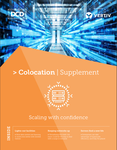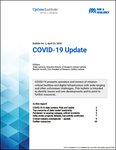Demand for IT capacity continues to grow rapidly across the globe, which has driven the need for more industrialized approaches to data center construction and component assembly. Large operators and their partners have scrambled to apply new processes and disciplines, expand and re-organize supply chains, deploy prefabricated components, and, where possible, reduce cost overheads, variation and complexity.
These approaches have led to dramatically shortened provisioning times in recent years. Globally, the average time to provision a new large data center (20 megawatts or more), following best practices, is just nine to 10 months, according to research by the Uptime Institute Some are provisioned in as little as six months — an incredible achievement given the multiyear timelines of a decade or two ago.
These approaches have also led to lower capital costs (on average). The money required to build a new large data center (20 MW or more), following best practices, has fallen to $7-8 million per megawatt (global average). Some are even able to achieve this for less — as low as $3.6 million per megawatt. This is also significant improvement compared with a decade ago, when $12 million per megawatt was common for data centers typically in the 3-15 MW range. Today, the cost of building a medium-sized data center (5-19.9 MW) can be similar to that of a large data center if best practices are followed.
Factors that affect speed
Achieving the best-case provisioning speed relies on the use of prefabricated systems across all areas and on having access to experienced builders doing repeat builds of standardized construction approaches, supported by a strong local supply chain.
The need to quickly mobilize many construction workers for a brief project at a reasonable price can be a management and logistical challenge — one that requires the availability of considerable local presence and expertise. The workforce will need experience doing repeat builds of standardized construction approaches and, ideally, the specific building system to be installed (e.g., precast concrete, steel).
Most builders have adopted a standard power increment, typically between 1.5 MW and 10 MW, that is repeated in multiples to achieve the total power delivered in a project. Repeating standard configurations, enabling parallel installs and using the same team of experienced workers simplifies material supply, leads to process improvements and reduces provisioning time.
Factors that affect cost
Data center provisioning capital expenses will vary among projects, even when using best practices. This is due to differences in site conditions and location, access to specialist workforces, material and worker transportation, and a range of other variables related to the region (e.g., regulations, seismic activity, supply chains, climate) and facility specifications.
One important aspect that drives cost is power density of the IT racks. Higher density can drive down overall costs. While there could be some trade-offs in electrical equipment and cooling, the main impact of higher density is reduced floor space/building shell, resulting in overall lower building costs.
Custom requirements can also affect both capex and opex. For example, large cloud providers that design their own server hardware can deviate from ASHRAE rules, allowing a wider thermal envelope (usually hotter) and lower opex due to reduced cooling (and thus power) use. This modification may mean lower capex in terms of equipment but may increase some build costs.
The key to building data centers — regardless of size — for the lowest possible cost is similar to the key to building them at the fastest possible speed: repeat proven, standard approaches. Hire the same experienced crews. Consistently use the same engineering, techniques and technologies. Larger projects can reach slightly lower price points by purchasing equipment in larger volumes and by splitting fixed costs over additional megawatts.
There is no single technology or practice that can be credited — these faster, cheaper builds are achieved through a combination of technologies and practices. Data center capacity providers, such as colocation and wholesale leasing companies, that are building large data centers very quickly are competitively positioned to attract large-scale cloud customers — and are likely to continue to refine their processes and approaches to achieve shorter provisioning times, at even lower cost, in the future.
The full report Best-in-class data center provisioning is available here.





